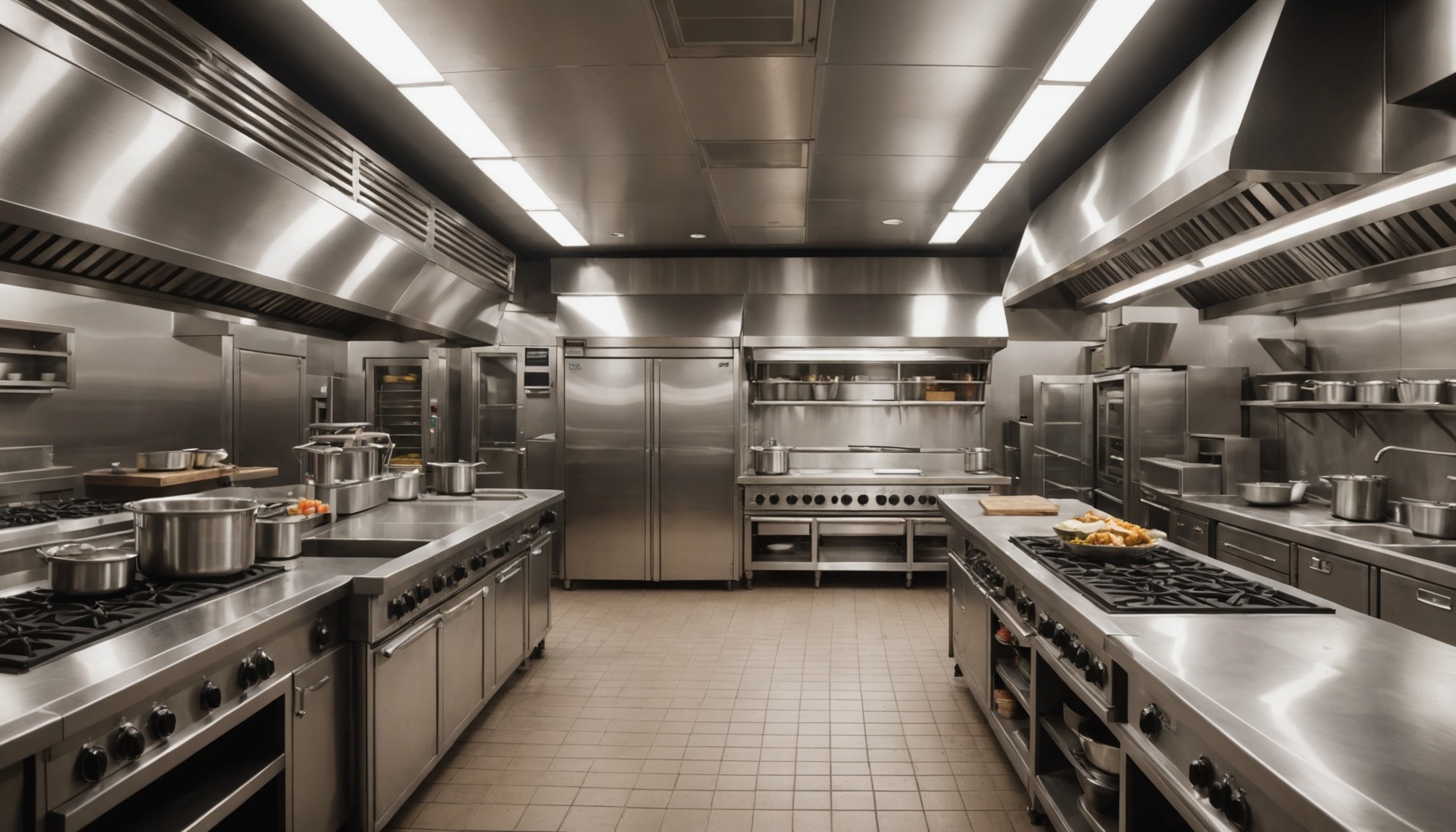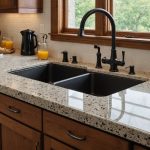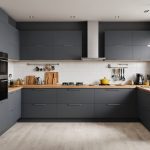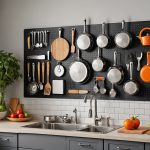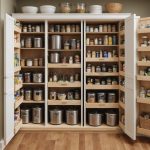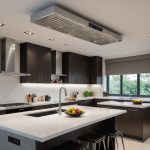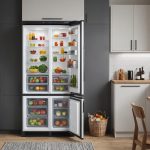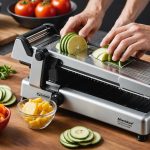Efficient kitchen design is essential for any vegan restaurant aiming to streamline operations and deliver exceptional dishes. Creating a layout that maximizes workflow and minimizes congestion can greatly enhance both staff productivity and customer satisfaction. This insight focuses on key elements that structure your kitchen, such as the placement of equipment and storage solutions, tailored specifically for a plant-based menu. Discover how an optimized space can elevate your culinary offerings and contribute to a seamless dining experience. Get ready to transform your kitchen into a hub of efficiency that nourishes both creativity and productivity.
Importance of an Efficient Kitchen Layout in Vegan Restaurants
Understanding the intricacies of kitchen design can significantly impact a vegan restaurant's success.
Also to discover : Exploring Unique Ice Cream Flavor Innovations: Must-Try Ingredients for Your Dessert Bar
Overview of Kitchen Workflow Efficiency
An efficient kitchen layout is crucial for maintaining smooth operations in vegan restaurants. It allows chefs to move seamlessly between stations, reducing time spent on tasks and minimizing errors. By strategically placing equipment and ingredients, restaurants can optimize their workflow, ensuring that meals are prepared swiftly and consistently.
Unique Challenges Faced by Vegan Restaurants
Vegan restaurants face unique challenges, such as diverse ingredient requirements and specialized equipment for plant-based cooking. These establishments must accommodate a wide range of fresh produce, grains, and legumes, often requiring more storage and preparation space. An efficient kitchen layout can address these challenges by organizing the workspace to handle the increased complexity and volume of ingredients.
In the same genre : Essential Components of an Effective Restaurant Fire Safety Plan: Key Elements You Can’t Overlook
Benefits of an Optimized Kitchen Layout
An optimized kitchen layout offers numerous benefits, including improved staff productivity, reduced waste, and enhanced customer satisfaction. By streamlining processes, vegan restaurants can serve dishes faster, maintaining high standards of quality. This efficiency not only boosts profitability but also supports the restaurant's reputation for delivering exceptional plant-based cuisine.
- Key Benefits:
- Increased productivity
- Enhanced quality control
- Reduced preparation time
In conclusion, a well-designed kitchen layout is indispensable for achieving vegan restaurant efficiency, providing a foundation for success in the competitive culinary landscape.
Key Elements of a Functional Vegan Kitchen Design
Creating a functional vegan kitchen design is essential for efficiency and success.
Zoning for Different Cooking Areas
Zoning is a crucial aspect of kitchen design elements. It involves dividing the kitchen into specific areas dedicated to various tasks. This setup allows chefs to focus on their work without unnecessary interruptions. In a vegan kitchen, zoning might include separate spaces for preparing raw vegetables, cooking grains, and blending sauces. By clearly defining these zones, the kitchen can operate smoothly and efficiently.
Storage Solutions for Fresh Produce
Effective storage solutions are vital to maintaining the quality of fresh produce. Functional spaces within the kitchen should include ample refrigeration and shelving. This ensures that ingredients are easily accessible and kept at optimal conditions. A well-organized storage system reduces waste and streamlines the cooking process, allowing chefs to quickly find and use ingredients as needed.
Preparation and Cooking Workflow
A seamless preparation and cooking workflow is another critical component of kitchen design elements. This involves arranging equipment and workstations to minimize movement and maximize productivity. For example, placing chopping stations near storage areas can reduce the time spent transporting ingredients. A well-thought-out workflow enhances the overall efficiency of the kitchen, ensuring that dishes are prepared swiftly and consistently.
Recommended Equipment for Vegan Restaurant Kitchens
Essential tools and appliances for optimizing plant-based culinary operations.
Essential Appliances for Plant-Based Cooking
In a vegan restaurant kitchen, having the right kitchen equipment is crucial. Key appliances include high-powered blenders for smooth sauces and nut-based concoctions, and steamers for perfectly cooked vegetables. Induction cooktops are favored for their energy efficiency and precise temperature control. These appliances not only enhance the quality of dishes but also contribute to the kitchen's overall efficiency.
Tools Needed for Efficient Food Prep
Efficient food prep requires specialized tools. Sharp knives and mandolins are essential for slicing vegetables quickly and uniformly. Food processors are indispensable for creating plant-based patties and spreads. A well-stocked kitchen should also have a variety of vegan cooking tools, such as tofu presses and spiralizers, to handle diverse preparation needs.
Energy-Efficient Options for Sustainability
Sustainability is a core value in vegan restaurants. Investing in energy-efficient kitchen equipment can significantly reduce a restaurant's carbon footprint. Look for appliances with Energy Star ratings and consider solar-powered options. By choosing sustainable equipment, restaurants not only lower operational costs but also align with eco-friendly principles.
Key Equipment:
- High-powered blenders
- Induction cooktops
- Energy-efficient appliances
This comprehensive approach to equipping a vegan kitchen ensures both efficiency and sustainability, supporting the restaurant's culinary and ethical goals.
Space Maximization Strategies
Maximizing kitchen space is crucial for efficiency and functionality.
Utilizing Vertical Space
Vertical space optimization is a simple yet effective way to enhance a kitchen layout. By installing shelves and hanging racks, restaurants can store ingredients and equipment without cluttering countertops. This approach frees up valuable workspace, allowing chefs to focus on meal preparation. Consider using wall-mounted pot racks or magnetic strips for knives to keep tools within easy reach.
Multi-functional Equipment
Incorporating multi-functional equipment is another strategy for maximizing kitchen space. Appliances that serve multiple purposes, such as a combination oven and steamer, can reduce the need for separate devices. This not only conserves space but also streamlines the cooking process. By investing in versatile tools, vegan restaurants can improve their workflow and adapt to various culinary needs.
Layout Designs for Small Kitchens
For small kitchens, layout design tips are essential. Consider an L-shaped or galley layout to make the most of limited space. These designs enhance movement and accessibility, ensuring that chefs can work efficiently. Additionally, integrating foldable tables or rolling carts can provide flexibility, allowing the kitchen to adapt to changing demands.
- Key Strategies:
- Vertical storage solutions
- Multi-functional appliances
- Flexible layout designs
Case Studies of Successful Vegan Restaurant Kitchens
Exploring innovative designs that drive success in vegan culinary spaces.
Analysis of Layout Designs from Leading Vegan Restaurants
Examining successful kitchen designs reveals how some vegan restaurants have optimized their spaces. For instance, one renowned establishment utilizes an open kitchen layout, facilitating seamless communication and collaboration among staff. This design not only enhances workflow but also allows customers to observe the food preparation process, adding transparency and engagement.
Lessons Learned from Real-World Implementations
Real-world implementations highlight the importance of adaptability in successful kitchen designs. A prominent vegan restaurant adapted its layout by incorporating mobile prep stations, enabling flexibility during peak hours. This approach underscored the necessity of dynamic spaces that can adjust to varying demands, ensuring efficiency and customer satisfaction.
Recommendations Based on Case Study Outcomes
Based on these case studies, several recommendations emerge for aspiring vegan restaurants. Prioritize successful kitchen designs that accommodate both current and future needs. Consider modular equipment that can be reconfigured as required. Additionally, engage with staff to understand workflow bottlenecks and address them through thoughtful layout adjustments.
- Key Takeaways:
- Open kitchen layouts foster transparency
- Mobile prep stations enhance flexibility
- Modular equipment supports adaptability
These insights into vegan restaurant examples provide a roadmap for creating efficient and inviting culinary environments.

